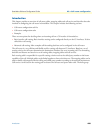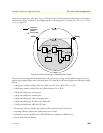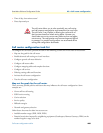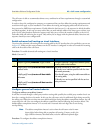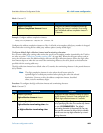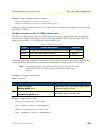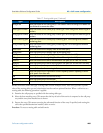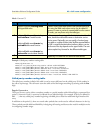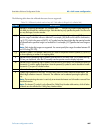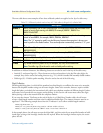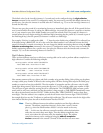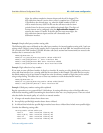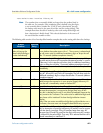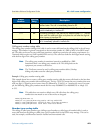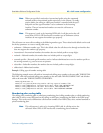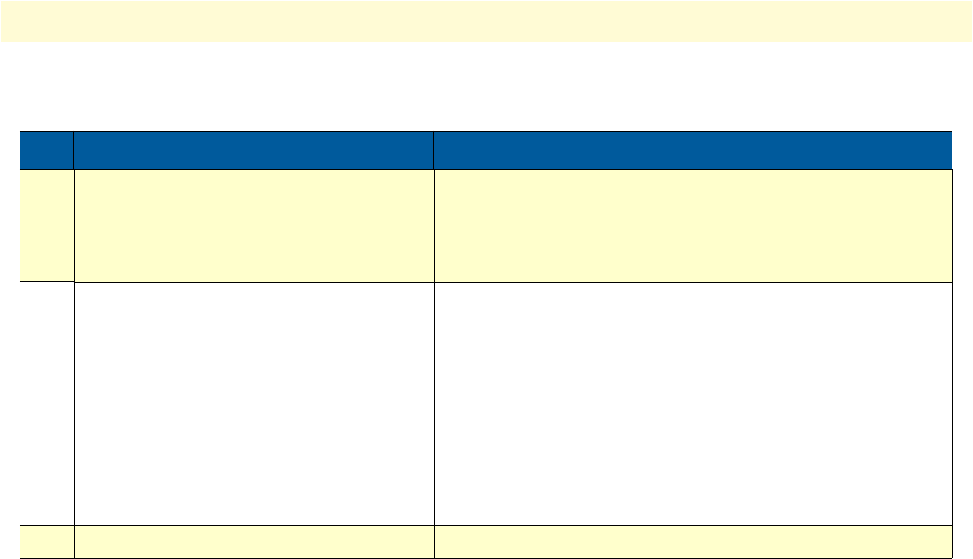
Call router configuration task list 466
SmartWare Software Configuration Guide 40 • Call router configuration
Mode: Context CS
Example: Called party number routing table
node(cfg)#context cs
node(ctx-cs)[switch]#routing-table called-e164 NATIONAL
node(rt-tab)[NATIONAL]#route 001 dest-interface USVOIP-A
node(rt-tab)[NATIONAL]#route 001320 dest-interface USVOIP-B
node(rt-tab)[NATIONAL]#route 0044 dest-interface EUROVOIP
node(rt-tab)[NATIONAL]#route 0049 dest-interface EUROVOIP
node(rt-tab)[NATIONAL]#route default dest-interface DEFACC ADD-PREFIX
Called party number routing table
The called party number (called-e164) table is used to route calls based on the called party E.164 number in
the call set-up message. The call router scans the table to find the longest matching key starting with the first
digit.
Regular Expressions
The key of an entry can be either a complete number or a partial number with wildcard digits, represented by a
period (.) character. Each (.) represents a wildcard for an individual digit. For example, if the key is defined as
888 . . . ., then any called party number beginning with 888, plus at least four additional digits matches this
entry.
In addition to the period (.), there are several other symbols that can be used as wildcard characters in the key.
These symbols provide additional flexibility in designing call routing and decrease the need for multiple entries
in configuring number ranges.
Step Command Purpose
1
node(ctx-cs)[switch]#routing-table
table-type table-name
Create a routing table table-name of the specified table-type.
This enters the table mode where entries can be added or
removed. To enter a previously created table from the context
CS mode, you may leave away the table-type.
2
node(rt-tab)[table-name]#route key
dest-interface if-name function
or
node(rt-tab)[table-name]#route key
dest-table table-name function
or
node(rt-tab)[table-name]#route key
dest-service service-name function
Add an entry to the routing table for destination interface if-
name, destination table table-name or destination service
service-name. Optionally you can specify a function (map-
ping-table or complex function) that shall be executed before
the call is routed to the destination interface, table or service.
The format of the key depends on the type of table. The next
sections explain key formats for the different table types.
3
Repeat step 2 to add lines for additional table entries.



